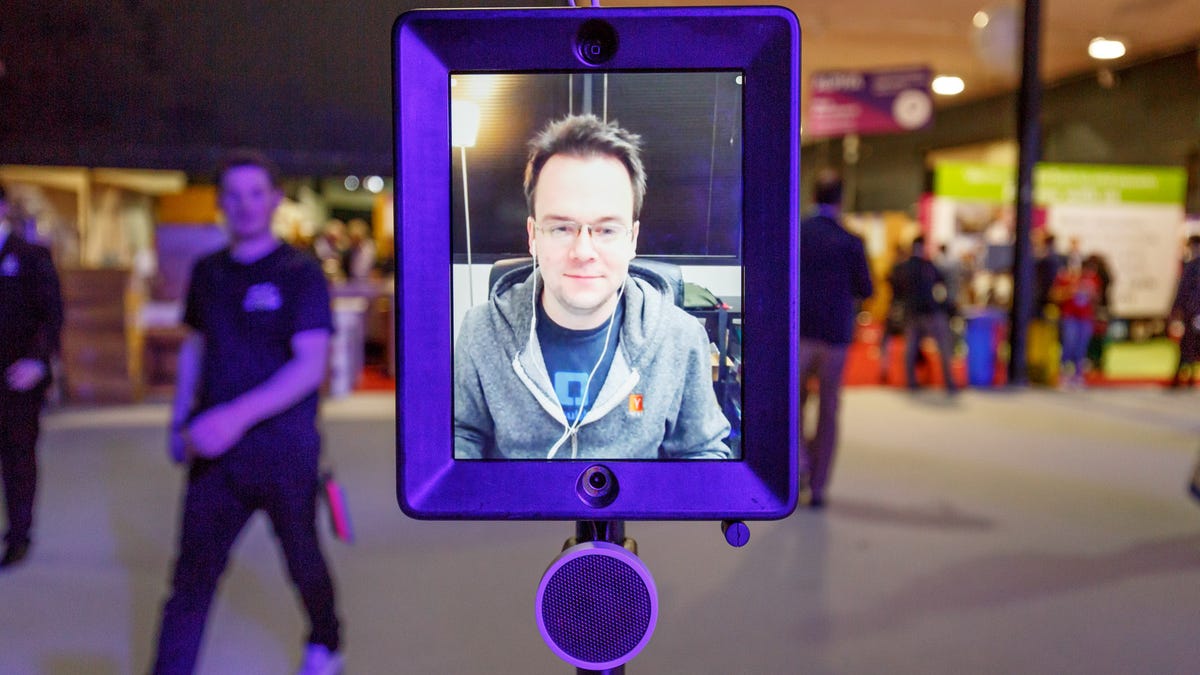Rolling robots give your face a presence far away
Telecommuters and long-distance students have bought 5,000 Double Robotics telepresence robots to bring a more human touch to long-distance electronic interactions.
DUBLIN -- The technology world is excited about goggles that bring a virtual reality to your eyes. But a startup called Double Robotics has the opposite idea: bringing a virtual version of you to the real world.
Double Robotics specializes in a technology called telepresence robots -- in this case, a remote-controlled iPad tablet perched on a stalk with wheels at the bottom. You control the Double with a smartphone or browser app, steering it around its distant location so you can talk to co-workers, classmates, medical patients and others who see your face on the iPad's screen.
Double Robotics CEO David Cann, for example, attended the Web Summit tech conference here on Wednesday using a Double even though he was eight time zones away in the San Francisco Bay Area, where the 35-person company is headquartered.
Telepresence robots show how technology like Wi-Fi networks and tablets can be repurposed for uses dramatically different from what designers originally envisioned. Although the $2,500 Double might be too expensive to be commonplace now, mainstream technology like iPads make it be cheap enough to undercut plane flight costs while providing a better interaction than videoconferencing software.
Videoconferences are fine for meetings, Cann said in an interview through a Double. "But what happens after in the hallway? That's often where the meeting really happens," Cann said. "With videoconferences you lose that human touch."
It may seem weird to hear the words "human touch" coming from a speaker grille on a motorized iPad, but the Double does seem more lifelike than a face on a computer screen. When Cann turned the Double toward another person, there's a visceral sensation of his attention shifting. And the robot rolls slightly back and forth to keep its balance in a way that animates its presence, a deliberate design choice.
Double Robotics' $2,500 telepresence robot lets CEO David Cann in California attend the Web Summit eight time zones east in Dublin, Ireland.
The human connection fades as congested networks caused the video to stutter. But for us, the audio connection generally kept pace, and there was no annoying communication lag.
The Double telescopes to a height of 5 feet, weighs 15 pounds and costs $2,500. The iPad is not included. The Double costs $3,500 with accessories like a charging dock and a better speaker and microphone for loud environments. Its battery lasts six to eight hours, and a remote operator can drive it to its charging station.
The company has sold 5,000 of the devices since its 2012 founding.
Examples of their use include the University of Montana, which sometimes has classes that blend 10 students sitting in a room with five or six Doubles. In addition, school systems can use them for students who are hospitalized, a cheaper alternative than hiring a tutor.
The Double draws crowds, which is why a Double is a better publicity stunt waiting in line to buy an iPhone 6S than for wandering around a tech conferene. But Cann likes it for routine office work, checking email and doing laundry at home while employees can simply walk into his office and chat.
But there are limits, Cann said. "I don't see you having a room full of Doubles and no people."


